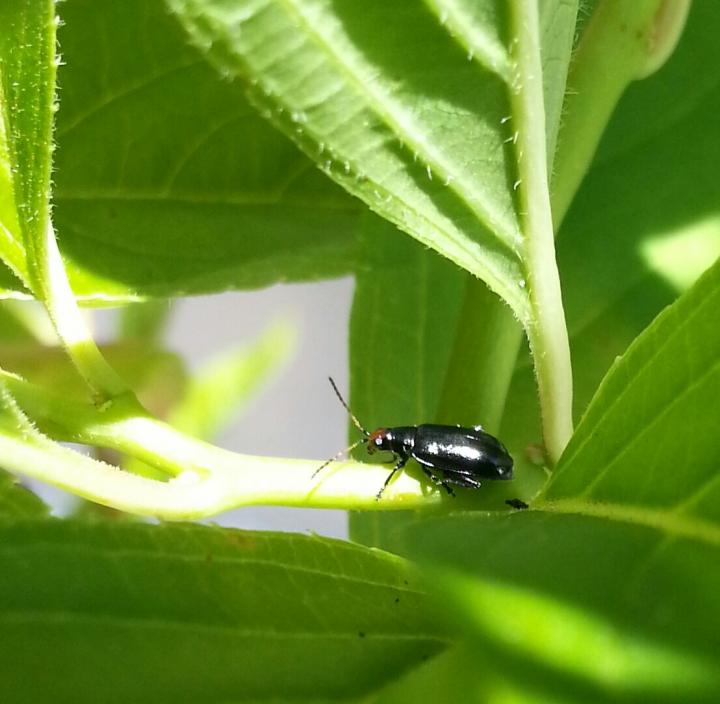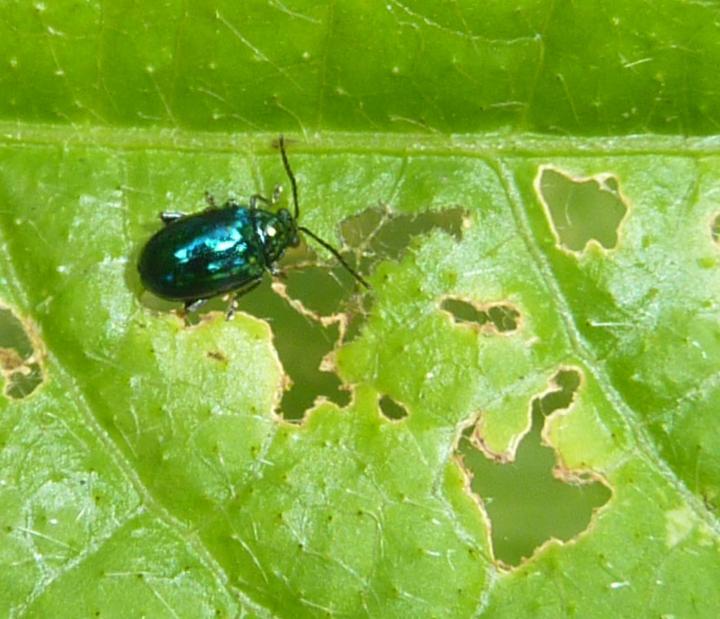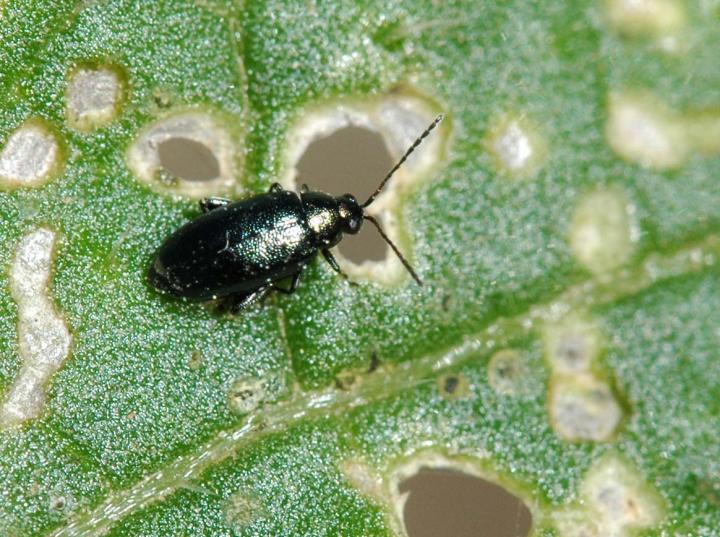






Flea beetles can be very destructive to a wide variety of plants, so be sure to take preventative measures.
Greg Bryant, North Carolina State UniversityHere are tips on how to identify, control, and get rid of flea beetles.
What is that flea-like insect that looks like a small beetle? The bothersome flea beetle!
There are many species of flea beetles which attack numerous plants, but vegetable crops are most susceptible to these pests. Flea beetles are so named because of their ability to jump like fleas when bothered.
The beetles are small and shiny, with large rear legs. Eggs are laid at the base of plant stems in early summer after a feeding period, and larvae feed at the roots. Adult beetles, about 1/16 inch long, feed on foliage, producing “shotholes” in the leaves.
Flea beetles vary from black to tan or other colors, solid, or spotted depending on the species. They are tiny garden bugs at only 1/16 inch in length. You can see them if you approach quietly, but they will spring away quickly if disturbed.
Adult flea beetles overwinter in brush and wooded areas. They pose a threat early in the planting season as they are emerging, typically when weather reaches 50ºF.
Look for shotholes in leaves, especially on young seedlings, where damage is most rapid and will cause the most harm. The holes they make will be round and can quickly damage leafy greens. New leaves are usually damaged first, and they will have a lacy appearance.
Flea beetles usually don’t cause fatal damage to established plants because the leaves are too large. The real danger is that they can spread bacterial diseases, such as wilt and blight, from plant to plant. Therefore, they must be controlled at once.


Cabbage Root Maggots: How to Identify and Get Rid of Garden Pests
Squash Vine Borer: How to Identify and Get Rid of Garden Pests
Whiteflies: How to Identify and Get Rid of Garden Pests
Moles: How to Identify and Get Rid of Moles in the Garden or Yard
Skunks: How to Identify and Get Rid of Skunks in the Garden
Squirrels: How to Identify, Control, and Get Rid of Squirrels in Your Garden
Copyright © www.100flowers.win Botanic Garden All Rights Reserved